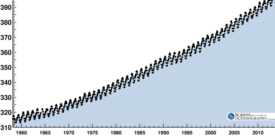Alan
I’ve had little to contribute to weekend reading of late, because I decided to read fewer articles and more books—hence my recent entry about an 800-page biography of Winston Churchill. And today’s: Eight years late, I finally read John Vaillant’s astoundingly gripping and deeply illuminating The Golden Spruce: A True Story of Myth, Madness, and Greed (W.W. Norton). It has joined the short list of books I consider exceptional works of place-focused nonfiction about the Northwest, along with Tim Egan’s The Good Rain, Sally Tisdale’s Stepping Westward, and Ivan Doig’s Winter Brothers. (What else goes on your list in this category? Tell me in comments!)
The Golden Spruce is a tragedy in the Greek sense. It’s the tale of a real-world, larger-than-life woodsman named Grant Hadwin. Born to privilege in a suburb of Vancouver, BC, he flees urban life for the lumber camps and endless wilds of British Columbia’s north. Then, after years of legendary wilderness exploits, he gradually goes insane, gnawed hollow by the contradiction of living off of a timber industry that is desecrating the most magnificent forest on the planet, the place that makes him whole and human. In the end, his mad rage against this earth-ruining world pushes him to an implausible and peculiar act of sabotage. He cuts down the most special and sacred of trees. It makes no sense; or it makes perfect sense. Is he insane or are we? (Hadwin’s physical prowess in the woods reminds me of only one other person ever, the fictional he-man super-logger Hank Stamper in Ken Kesey’s Sometimes a Great Notion, which is arguably the greatest work of place-based Cascadian fiction and is also a tragedy on a grand scale that involves madness, death, rain, and giant trees.)
Hadwin’s tale is the tow line that pulls us through Vaillant’s narrative, but his story is ultimately far larger than Hadwin’s. And it is also a tragedy: the story of Cascadia’s rainforests and coasts. How we have all—whites, Indians, newcomers, old-timers—fed them into the log chipper of the global economy, transforming them to money and then ending up impoverished for it.
The special tree that Hadwin fells is a beautiful, mutant, yellow-colored spruce on Haida Gwaii, also known as the Queen Charlotte Islands, so the book examines the islands and the Haida who live there in some detail. He describes their history, art, stories, and family structures, and he does so unromantically. He also relates the blood-thirsty war-faring they practiced for centuries. Vaillant is, in fact, the least romantic of the authors I listed above. He does not romanticize anyone. He just tells their story, in brush strokes both broad and fine, until the whole canvas is a thing to behold.
The net-effect of this cold-eyed portrait is to make it all the more moving: the love he makes us feel for our homeland isn’t the gauzy love of Hollywood, it’s the desperate, sleepless, pit-in-the-stomach love that parents know from taking infants to the emergency room.
I want to give you a taste of Vaillant’s writing, which is as thoroughly researched as it is artfully wrought, but picking a best passage is impossible. It’s all so good. Instead, I’ve opened the book at random to page 201, where I find this passage. It’s intriguing and magical and scientific and is not one bit better than any other paragraph in the whole book.
Nearby [to Haida Gwaii], in the same waters that support the world’s largest octopus (the Pacific Giant), are the last known vestiges of the most massive entity that ever lived. The first signs that something huge and remarkable might be living in Hecate Strait showed up in 1984 while scientists with the Geological Survey of Canada were doing a seafloor mapping exercise. Using sonar imaging, they observed certain acoustic anomalies that generated what was described as an “amorphous, irregular seismic signature having no coherent internal reflectors.” The source of the cryptic message turned out to be a vast prehistoric sponge that covers hundreds of square miles of sea bottom in Hecate Strait, southward to Queen Charlotte Sound. Before this remnant was discovered, silicious (“glass”) sponge reefs of this kind were believed to have been extinct for 65 million years. During their most successful era in the late Jurassic period, 140 million years ago, they covered hundreds of thousands of square miles of what was then the ocean floor; their fossilized remains have been found from Romania to Oklahoma…
The book goes on unfolding the marvels of reality in our rainy patch of planet for 239 pages. Read every one!
Clark
How 10 companies dominate the typical US grocery store.
Why has income inequality risen so sharply over the past few decades? A new paper from the US Congressional Research Service offers a simple answer: it’s the capital gains, stupid.
Eric
My top recommendation this week is “The Extraordinary Science of Addictive Junk Food,” a feature piece by Michael Moss at the New York Times Magazine. I have a pronounced weakness for certain kinds of junk food—chips most of all—so I found it especially alarming to read in some detail about the well-funded research that develops foods specifically targeted to make us eat far more than we should. That the science is effective could not be illustrated more effectively than the picture that accompanies the piece: a well-photographed single day-glo Doritos chip. Just looking at it I was so overcome that I nearly dashed out of the office to buy a bag. No kidding.
I’m almost finished with “No Easy Day,” a first-hand account of the killing of Osama bin Laden. It’s not a very good book, unfortunately, but it did spark my interest in a better piece of journalism by Phil Bronstein at Esquire, “The Man Who Killed Osama bin Laden… Is Screwed.” It’s a profile that well illustrates the grim prospects for veterans in the domestic economy and the lousy safety net afforded to those leaving the military.
At Crosscut, Knute Berger has fun with Seattle newspapers circa 1863, including a look at the key role that coal played in the early development of the region.
Over at Climate Solutions, Ross Macfarlane takes a hard look at Cloud Peak. They are a case study in the coal industry’s desperation to open up new coal export facilities on the West Coast. As a “pure play” Powder River Basin coal-mining company they find themselves marooned in the middle of a continent that no longer wants what they’re selling. Their only hope is to reach Asian markets and Ross goes into some detail about why their prospects are rather dim.
In response to Clark eviscerating their gimcrack finances, would-be coal exporter Ambre Energy has finally released their most articulate response to date.
Anna
Kansas City meteorologist Gary Lezak recently told his TV viewers how greenhouse gas emissions are changing our weather system. We need more like him.
This bodes well: Newly minted Secretary of State John Kerry holds forth on our responsibility to fight climate change. “This is what our generation—our generations—will be remembered for.”
I caught Philip Warburg on Speakers Forum last night. He’s an environmental lawyer and the author of “Harvest the Wind: America’s Journey to Jobs, Energy Independence, and Climate Stability.” He gives a straight-shooting, realistic look at our prospects of building a clean energy economy (and a brief history of our missed opportunities to do so over the past several decades).
And from the Nation, something you already know, but seems worth repeating until we make it go away: “In 1970, women earned, on average, 59 percent of men’s wages. More than four decades later, the figure is 77 percent.”
Serena
My packaging dream come true. If only this designer could get to work on our e-waste problem as well.









Eric de Place
I’m looking forward to reading The Golden Spruce, Alan, but I have a quibble with your book list: I think Winter Brothers belongs in the fiction stacks. If memory serves, Doig based the novel on his reading of a historical account of two or three guys who wound up in the Astoria region claiming to have made roughly the same voyage that he describes. But virtually all the details in the book, including (I think) their names, ages, and countries of origin — and certainly the particulars of their escape and travels — came from Doig’s imagination.
Alan Durning
Winter Brothers is about Doig’s experiences reading James Swan’s journals. It is certainly not fiction, although it is a hard work to classify. Imaginative nonfiction? Doig himself says it is the hardest of his books to classify. He writes on his blog, “Not a biography, not a memoir, neither history nor fiction—how about, I’ve taken to suggesting to the beleaguered classifiers, a journal of a journal.”
Curtis DeGasperi
Eric, You’re definitely thinking of a different book by Doig – The Sea Runners. Another awesome book by the way.
Eric de Place
[Forehead slap!]
Curtis, you’re absolutely right. I was thinking of Sea Runners, not Winter Brothers. That would explain my bafflement at Alan’s response. Thanks for sorting that out!
Curtis DeGasperi
Alan, Thanks for reminding me about The Golden Spruce. I loved that book! I can’t really add to your list, but I do think I’ll have to check out Stepping Westward. I’ve only spent a few minutes in Neah Bay on my way to Cape Alava, but I’ve always wanted to see if I could find the swan etched into a bluff there. Well, maybe I would recommend Swan’s own book – The Northwest Coast. Or, Three Years’ Residence in Washington Territory.
Jeanette Henderson
Mountain in the Clouds by Bruce Brown (1995) gets my vote. By the way, I love Weekend Reading!
http://seattle.bibliocommons.com/item/show/1807857030_mountain_in_the_clouds
Grace Wang
Alan, Vaillant’s next book, THE TIGER, is just as well-researched and riveting. Highly recommended! I’ve been on a non-fiction kick lately, mostly reviewing books for possible use in my classes. Some notable books recently:
1. Tomatoland by Barry Estabrook
2. Overdressed: the Shockingly High Cost of Cheap Fashion by Elizabeth Cline
3. The American Way of Eating by Tracie MacMillan